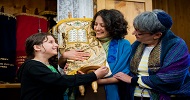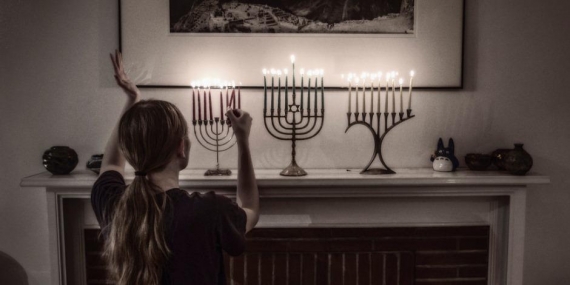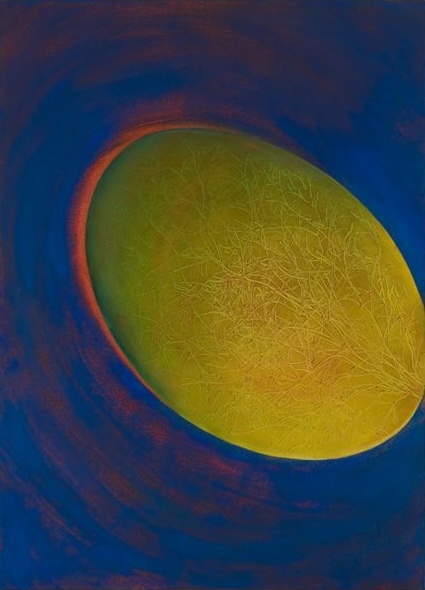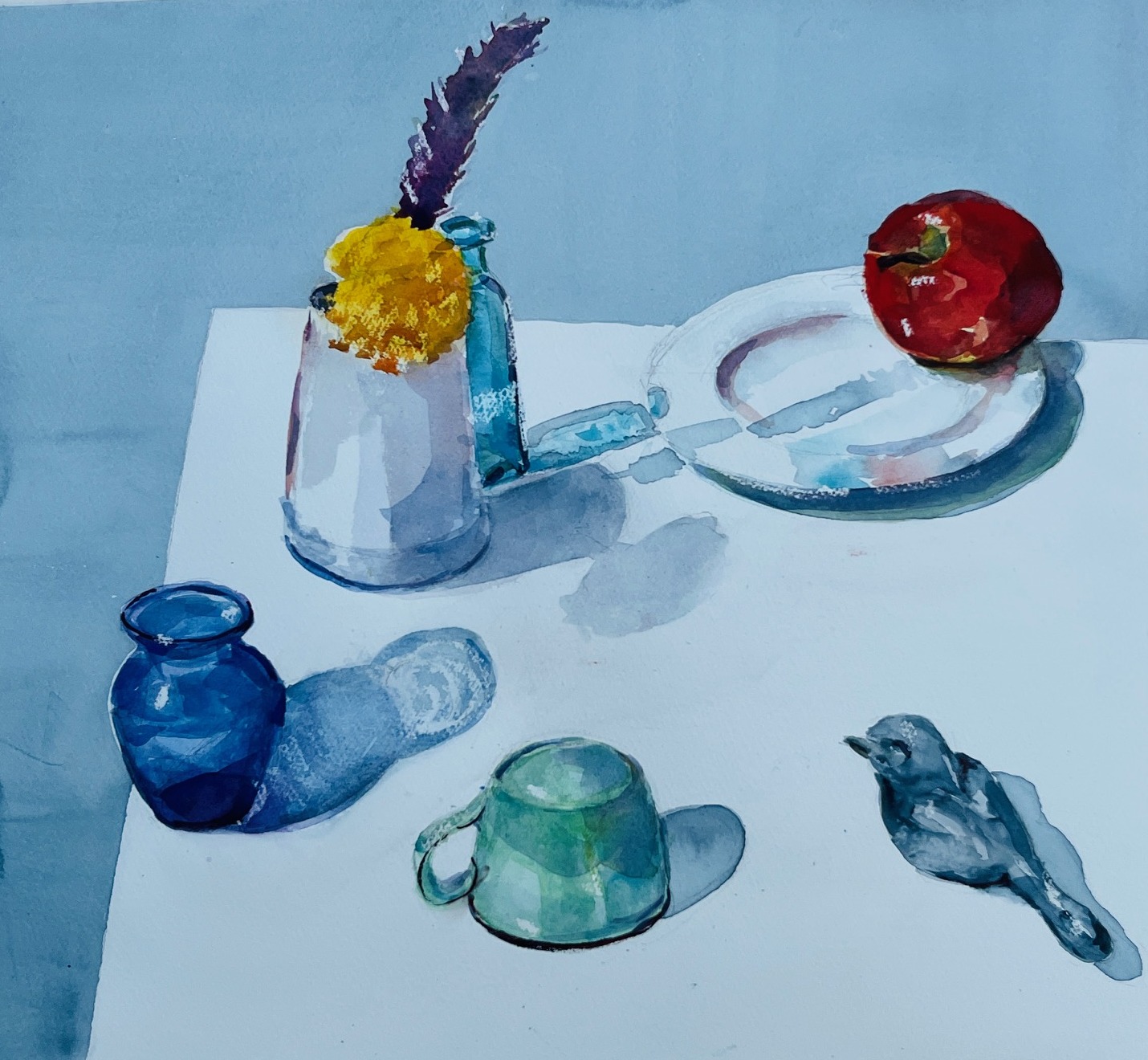Note: This article was originally published in 1994.
In the last ten years, there has been a growing awareness among women of the importance of life-cycle rituals, special celebrations and ceremonies marking important moments in our lives. We have moved from creating bat mitzvah rituals and baby-naming ceremonies for our daughters, to celebrating special birthdays (30, 40, 50, 60), as well as weaning, menopause, croning and Rosh Hodesh. As we have become more comfortable with our ability to create these special moments, some of us have gone on to conceive ceremonies for mourning, for healing of pain from disease, divorce or separation, for recovery from rape, incest or physical abuse.1
We have invented new ceremonies, created new music and songs, new ways to celebrate. It has been important for many of us to make these new observances resonate with a sense of the tradition from which they are drawn. We have adapted traditional rituals and infused them with new meaning. We have expanded the meaning of traditional blessings. We have dared to write new prayers. We are in truth re-creating, re-newing, re-vitalizing our lives.
In this article I will present some ideas to help us make a new ceremony fit the special occasion in our lives while still retaining a sense of our heritage as Jewish women and our connection to tradition.
1. Create a Sacred Space
In the wilderness the Jewish people built a mishkan, a portable sanctuary. Both men and women participated in its creation, by weaving fine cloth, making ritual vessels, beautifying the holy place. Before we begin our ceremony we must create our own mishkan. Whether at home, in a backyard, a beach or a forest, consider how to make the space holy for the time you will be using it. You may want to physically create sacred space by forming a circle, delineating the boundaries with ribbons or flowers, drape fabric or tallit around to define the area or have women in the circle hold or braid ribbons together. Some groups have indicated that the space was holy by washing the feet of guests as they entered barefoot, an act that is reminiscent of Abraham washing the feet of the angels. Some groups call up the spirits of our foremothers, Sarah, Rebecca, Leah and Rachel, as they face in each direction and create a spiritual circle. Flowers, fabrics. music, scents (be careful of people’s allergies) are all tools to create your mishkan.
2. Create a Mood
Take the time to make the transition from the outside world to this special moment. Silence or subdued background music are helpful. Begin with a song chosen to set the mood you want to create—solemn, joyous, exuberant. It is wise to explain at the outset what is about to take place in order to alleviate any discomfort that your guests may have in this unfamiliar setting.
Your ceremony will have at least three parts: the opening, the body of the ritual, and the closing. They may be parts of a whole that flow naturally one into the next or totally separate units, connected by transitions of music or prayer. You may choose to follow a format similar to a traditional service, Havdalah, or even a seder. Consider the amount of time your ceremony will take; the comfort zone seems to lie between half an hour or less for a simple ritual to as long as an hour and a half.
3. Select Components for the Ritual
The components of your service should be familiar, although you may choose to reinterpret them, present them in a new sequence, or create new prayers. The following list includes many familiar aspects drawn from ceremonies and services.
-Candle lighting
-Kiddush, blessing wine or grape juice. Remember guests who may be alcoholic, allergic or on special diets and provide an alternative drink for them.
-Challah, blessing bread. Find new ways of braiding or decorating it for this event
-Spices, for their sweet scent, as part of a service of separation based on Havdalah.
-Hand-washing, as we do at a seder.
-Foot-washing, as Abraham did for the angels.
-Planting a tree, a fruit tree or flowering tree, for the future generations particularly appropriate for births, birthdays, weddings, healing.
-Blessing special foods: first fruit of season, ceremonial foods i.e. Passover foods, Tu B’Shvat seder
-Giving a gift of charity.
-Making a vow of service or good deeds to the community.
-Changing a name as Avram and Sarai did when they became Abraham and Sarah.
-Donning a special garment such as a tallit or changing a garment from one dress to another, i.e. putting on a kittel, a white coat given to men for their marriage and worn on Yom Kippur, Passover and later used as a shroud (this is very moving in a croning ceremony).
-Cutting. Tradition says that we “cut a covenant” (the brit or circumcision is such a cutting); some people make a vow and cut an apple which when cut across contains a star.
-Reading, studying and interpreting a text from Torah, classical texts,
from poetry, literature, women’s journals, etc.
-Chanting from the Torah or other classic text. Try chanting in English as well as Hebrew.
-Storytelling, one person tells a story, or one person starts the story
and each person adds a piece to the story.
-Exchanging gifts or giving gifts
-Creating amulets
-Singing, learning new songs
-Dancing. Remember some of your guests may not be able to dance.
-Prayers and blessings, both familiar and newly created. Have close friends or family create blessings.
-Mikveh, immersion in water—hot tub, hot springs, pool, particularly
useful for any healing ceremony, particularly from abuse, addiction, divorce. In nontraditional settings, friends may surround the woman being immersed, hold her, float her, support her.
-Anointing, use of water or oil —i.e. put some on eyelids, say “I bless your eyes that you may see visions of peace,” on ears, “I bless your ears that they may hear the sounds of music and of joy,” etc. This has been very succeccful blessing a woman approaching marriage or childbirth.
-Guided meditation or guided visualization
-Silence. Don’t be afraid to use silence. It can be very powerful.
4. Addressing Anger, Pain and Sorrow
Each Jewish holiday has its own special symbols which can be used or adapted. While these ritual acts can be used in your ritual, they may prove to be particularly useful for women who are dealing with pain from death of a loved one, illness, broken relationships or from emotional, physical or sexual abuse. Some women may have bottled up their anger and hurt, fearful of the depth of emotions that they are feeling. A simple ceremony which will allow them an opportunity to vent these feelings in a safe, controlled setting, with the close emotional support of a few good friends may be the tool that allows them to begin the healing process. I describe just a few possibilities, you will think of others.
- When the Torah is read, it is customary to say a Mi Sheiberakh, a prayer of healing.
- During the month of Elul, preceding the High Holidays, we become introspective and look at how we may have offended our friends or family and ask their forgiveness.
- At Rosh Hashonah we symbolically empty our pockets of our sins and cast the debris into the water, as we cleanse ourselves for the new year.
- At the beginning of year we eat apples and honey for their sweetness.
Before the High Holy days we can perform another symbolic act to rid ourselves of our sins as we shlog kaporis. As a child my grandfather would swing a rooster over his head as he recited the prayers; we were each given a dime to use instead. - During Sukkot we build booths to live in for the week. We welcome our friends and historic visitors from the past to share the season.
On Chanukah we bring light into the darkest season by lighting candles. - As we read the story of Esther at Purim, we use noisemakers to drown out the name of the evil Haman. Some communities write the name of Haman on their shoes and dance and stomp out his name.
- Preparation for Passover includes a thorough house cleaning, when hametz (food forbidden during the holiday) is burned.
At some Passover seders, drops of wine spilled to represent the plagues are collected and cast out. At others, the guests beat each other over the head with scallions. At still others, the participants walk around the dinner table, as if they were leaving the land of Egypt. - At a funeral, the mourners rip their garments in grief. The tearing of cloth can be very effective.
- Before a wedding, a plate is broken; during the wedding the groom steps on a glass to break it.
- Keening, shouting, moaning may be an expression of anger or sorrow. Friends can be supportive by participating together.
- At the close of the Sabbath, Havdalah is performed to separate the holy from the routine. The use of spices, candle and wine is a fine way to separate one event from another.
These acts of burning, tearing, cleaning, casting out, breaking, stamping, cleansing, moving can allow us to do symbolically what we would like to do in our own lives.
5. Ceremonial Objects
The use of ritual objects, garments, or other treasures from family members or friends which have historic or nostalgic connections, can add a moving note to any ritual: grandmother’s lace tablecloth, grandfather’s tallit, kiddush cup, candlesticks, locket. Use a huppa, marriage canopy, to stand under for special blessings. Use a large tallit to wrap several people in for blessings. Create your own ritual object as part of the service: a bowl or cup that the participants can take home, a paper-cut, a blessing written on special paper. Just use your imagination.
6. Questions to Contemplate
For many rituals, it is appropriate to think of answering three questions (three is a good number, seven and four are also mystical numbers from tradition to use):
- What do you want to leave behind?
- What do you want to remember or take with you from the past?
- What do you want to create new for the future?
You may create new questions, or reframe these.
7. Putting it All Together
While this list appears to be extensive, it is only a beginning. You can use what seems right to you and to those with whom you will do your ritual. In the beginning it is probably best to do only what you are comfortable doing, but as you get some practice, you will be moved to stretch yourself and become more innovative. Think about dividing your ceremony into three parts, opening with music and blessing, moving into the main body of the ritual, closing with blessing and music. In addition to the prayer book, look to poetry, songs, and other creative services for your sources. Remember if you put together a written service to credit the names of your sources. Good luck.2
Resources and References
There are many new sources of information about creating rituals, so many it is almost impossible to keep up. These are the ones that I have on my shelves and to which I turn for help and ideas.
Adelman, Penina V. Miriam’s Well: Rituals for Jewish Women around the Year, New York: Biblio, 1990
Adelman, Penina V., “A Drink from Miriam’s Cup: Invention of Tradition among Jewish Women,” Journal of Feminist Studies in Religion 10 (Fall 1994): 151–66.
Berrin, Susan, Celebrating the New Moon: A Rosh Chodesh Anthology, New Jersey, Jason Aronson, 1996
Falk, Marcia Lee, The Book of Blessings: A Feminist Jewish Reconstruction of Prayer, San Francisco: HarperSanFrancisco,, 1997.
Fine, Irene, Midlife, A Rite of Passage and The Wise Woman, A Celebration, San Diego: Woman’s Institute for Continuing Jewish Education, 1988.
Gottlieb, Lynn, She Who Dwells Within: A Feminist Vision of a Renewed Judaism, Harper/San Francisco: 1995.
Imber-Black, Evan and Janine Roberts, Rituals for Our Times: Celebrating, Healing and Changing our Lives and Our Relationships, New York: Harper Collins, 1992.
Levine, Elizabeth Resnick. A Ceremonies Sampler: New Rites, Celebrations,, and Observances of Jewish Women. San Diego: Woman’s Institute for Continuing Jewish Education. 1991.
Millgram, Abraham, Jewish Worship, Philadelphia: Jewish Publication Society, 1959. This book describes traditional worship, services and home celebrations. You may choose to use such a source to ground your ritual in tradition. Prayer books and encyclopedias can be of help, as well as the Strassfeld and Waskow books listed here.
Orenstein, Debra, editor, Lifecycles 1: Jewish Women on Life Passages and Personal Milestones, Woodstock, Vermont: Jewish Lights, 1994.
Siegel, Richard, Michael Strassfeld, Sharon Strassfeld, The Jewish Catalog, Philadelphia: Jewish Publication Society, 1973.
Spiegel, Marcia Cohn and Deborah Lipton Kremsdof, Women Speak to God: The Prayers and Poems of Jewish Women, San Diego: Woman’s Institute for Continuing Jewish Education, 1987.
Strassfeld, Michael, Sharon Strassfeld, The Second Jewish Catalog, Philadelphia: Jewish Publication Society, 1976.
Strassfeld, Michael, The Jewish Holidays: A Guide and Commentary, New York: Harper and Row, 1985.
Teubal, Savina. Simchat Hochmah in Four Centuries of Women’s Spirituality, edited by Ellen Umansky. Her service is also available on tape from SoundsWrite Productions , see information below.
Waskow, Arthur, Seasons of our Joy: A Modern Guide to the Jewish Holidays, Boston: Beacon Press,1990.
Also check: New Menorah: The Journal of ALEPH: Alliance for Jewish Renewal, 7318 Germantown Ave., Philadelphia, PA 1911999-1793 (215-247-9703) for other sources of texts and music.
Waterwheel, this quarterly newsletter from the Women’s Alliance for Theology, Ethics and Ritual (a Catholic women’s organization), presents a new ritual in each issue. While directed toward women, they are often non-gendered, and ecumenically inclusive. Jewish prayers, poetry, song and ritual are often included. 8035 13th St., Silver Spring, MD 20910-4803.
There is a wonderful selection of new music being written. I can’t possible even begin to list the artists. One good source of such music is: Sounds Write Productions, 6685 Norman Lane, San Diego, CA 92120 (619-697-6120, fax 619-697-6124). Other sources include Tara Publications 1-800-TARA-400 and Kol Ami 1-800-393-4264.
Some of the musical artists include: Debbie Friedman, Shefa Gold,
Linda Hirschorn, Penina Adelman, Miraj, Hannah Tiferet Siegel.
1Adelman, Penina V. Miriam’s Well: Rituals for Jewish Women Around the Year. 2nd edition. New York: Biblio Press. 1990.
Fine, Irene. Midlife: A Rite of Passage and The Wise Woman: A Celebration. San Diego: Woman’s Institute for Continuing Jewish Education. 1988.
Levine, Elizabeth Resnick. A Ceremonies Sampler: New Rites, Celebrations, and Observances of Jewish Women. San Diego: Woman’s Institute for Continuing Jewish Education. 1991.
Lilith: The Jewish Women’s Magazine. Fall, 1988.
Orenstein, Debra. Lifecycles: Jewish Women on Life Passages and Personal Milestones. Woodstock, Vermont: Jewish Lights Publishing. Three volumes. Volume 1 out in 1994.
2I have drawn these ideas from Irene Fine, Savina Teubal, T. Drorah Setel, Rabbi Sue Elwell, the Mikveh Ladies, Shabbat Shenit and B’not Eish and many other women who have dared to create new rituals.
This article appeared in Neshama, Winter, 1994. 6:#4; used by permission of the author.













